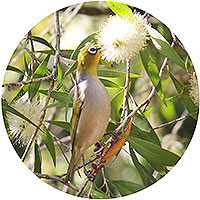Sustainable Forestry
Forest Stewardship Council® (FSC®) certification
The Forest Stewardship Council (FSC) is an independent, not-for profit, membership based organisation that provides a rigorous, stakeholder driven system of forest certification with international credibility.
At Australian Sustainable Timbers we sought out FSC certification to verify what we were doing in our forestry operations through independent third party auditing. We decided on FSC certification because it provides the only trusted, internationally renowned forest certification system.
In 2007, Australian Sustainable Timbers gained the first FSC certification in native forest in Australia. Our certification is part of the Small, Low-Intensity Managed Forest (SLIMF) category and we manage a number of properties in what is referred to as a ‘Group Scheme’. As part of our group scheme we are always seeking new landholders with similar aims in sustainable forestry to join our group. Please contact us if you are interested.
AST also holds a chain of custody certificate which tracks timber from the forest, through processing to the end consumer.
We were proud to be the inaugural winners of the FSC Small Forest Manager of the Year award in 2009 and again in 2011.
Our story
James and Annabel have come around to timber production in a non-conventional way. Working for many years with Greening Australia, Landcare and Greencore, they have planted their fair share of trees.
"Whilst working with landholders around the Hunter Region on revegetation and farm forestry projects, we found ourselves battling to plant trees in a drought when the natural regrowth around the hunter grew so well by itself. At the same time we were seeing the plantation sector planting vast areas of simple, single species short term forests, not designed to produce quality timber products or biodiversity outcomes."
James and Annabel turned their focus to native forests on private land as a sustainable source of timber production.
"We began visiting landholder’s properties and seeing the effects of past poor logging practices on the native forests on private land. It was obvious these forests needed help to become complex and productive ecosystems again. A long-term outlook was desperately needed for our forests on private land."
Annabel undertook a Master’s degree in forestry and became passionate about a new style of ‘rehabilitative forestry’. Together she and James spent several years teaching landholders about sustainable forestry through property visits and training courses such as the well renowned ‘Master TreeGrowers’.
In time, Annabel and James decided to put passion into practice and set out to demonstrate a model for sustainable forestry on private land. They bought a forested block of land at Monkerai in the foothills of the Barrington Tops in NSW and started on the journey that has become Australian Sustainable Timbers.
Our forestry practices
On the north coast of NSW we have beautifully diverse forests with some of the most versatile timber species in the world. Managed well, these forests are capable of providing both biodiversity outcomes as well as timber for generations of landholders in perpetuity. Unfortunately, since the early days of the ‘Cedar getters’, traditional logging methods have been more akin to mining, focussed on what is taken out rather than what is left behind. Over the decades, the best trees and most valuable species have been ‘creamed out’ of the forest by chasing the biggest and best logs.
At AST we acknowledge that the harvest is over.
We believe it is time to take a rehabilitative approach to forestry.
As a result, our systems are focussed on restoring the ecological function as well as the commercial productivity to the forest. Each forest is unique and we cannot simply apply a recipe book to management. The key to our approach is the development of a comprehensive and site-specific management plan for each area of forest we work in.
Firstly, we carry out a thorough scientific forest inventory and using mapping we piece together a unique plan for the site. A long- term outlook is essential and our plans consider the immediate harvest as well as the on-going management for the next 100 years.
Harvesting is complex and often in one small area a mosaic of different solutions is required. Tree marking is the key, coupled with the aim of leaving behind a better forest than you found.

